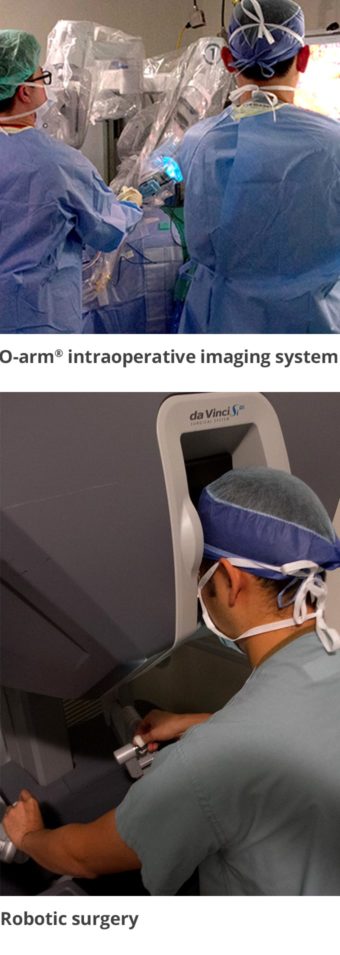The USC Spine Center treats all patients with primary and metastatic spine tumors. Our physicians have a strong interest in treating patients with spine tumors as early as possible in the course of the disease. Patients can be successfully treated before they have urgent or emergent needs related to the spine tumors, or when they have few symptoms.
We have expertise in a wide range of primary spine tumors, including chordomas, chondrosarcomas and spinal cord tumors. The incidence of metastatic spine tumors is increasing due to better medical management of the primary disease, leading to an improvement in cancer survival.
Coordinated care is delivered from a multidisciplinary team at the USC Spine Center, consisting of oncologists, neurosurgeons, neurologists and radiation oncologists. The team meets biweekly to discuss complex cases. Community physicians can submit case information to the team to receive a medical opinion on treatment.
Treatment options for primary and metastatic spine tumors span the range of radical tumor resection to minimally invasive surgery, with the aim of maximizing the treatment in one surgery (see sidebar). We offer a variety of state-of-the-art treatments, allowing our physicians to tailor the right treatments to a patient’s unique needs.

 Intraoperatively, surgeons often use an O-arm® intraoperative imaging system to more accurately determine where instruments and hardware are placed in the tissue. To remove metastatic tumors in the vertebral body, surgeons prefer using a posterior, posterolateral or retropleural approach to spare the patient the post-operative issues associated with an anterior approach.
Intraoperatively, surgeons often use an O-arm® intraoperative imaging system to more accurately determine where instruments and hardware are placed in the tissue. To remove metastatic tumors in the vertebral body, surgeons prefer using a posterior, posterolateral or retropleural approach to spare the patient the post-operative issues associated with an anterior approach.
Robotic surgery is an emerging area for management of spine tumors at the USC Spine Center. We are one of only a few institutions in the United States performing robotic spine tumor surgery. The procedure is ideal for tumors that are deep within a cavity, as the robotic access provides better visualization of these tumors than would be obtained otherwise. The benefits of this procedure are that it is less invasive, with smaller incisions than a traditional surgical procedure. Patients often have a shorter hospital stay after robotic surgery for a spine tumor.
When treated early, patients with spine tumors may be able to retain their neurological function and have a better quality of life than if the treatment is delayed. More treatment options are often available to patients at an earlier stage in the disease, including less invasive surgical procedures.
With a wide array of treatment options, patients can receive state-of-the-art, multidisciplinary care for their spinal tumors at the USC Spine Center. Contact us today to see how we can help you and your patients.